-
Posts
67 -
Joined
-
Last visited
-
Days Won
3
Content Type
Profiles
Forums
Store
Gallery
Downloads
Calendar
C-130 Hercules News
Posts posted by C-130Hercules.net
-
-

Kellstrom Defense Aerospace (KDA) has been selected by Sabena technics as a partner for the support of C-130 aircraft maintenance, the company announced on 18 February
Under the multiyear supplier agreement signed between the two companies, KDA will provide a wide range of aftermarket parts support and component repair and overhaul services.
Andy Trosper, president of global distribution and supply chain, KDA, said: ‘We are excited to provide an integrated aftermarket package to Sabena technics in support of their global aircraft refurbishment programmes.
‘The collaborative relationship we have developed with Sabena technics has made it possible for us to come to quick decisions that benefit the programme. The Kellstrom Defense Advantage ensures that the customer benefits from the value of our total offerings, our flexibility and our overall commitment to our customers and the end mission.’
Source: https://www.shephardmedia.com/news/mil-log/sabena-technics-selects-kda-c-130-maintenance/
-

Kellstrom Defense Aerospace, Inc. (KDA) has partnered with Wojskowe Zakłady Lotnicze Nr 2 S.A. to support the Polish Air Force with six SHORT-POD APU Kits to upgrade their C-130 military transport aircraft.
This KDA proprietary aircraft technology update enhances legacy C-130 aircraft ground power autonomy, makes available airborne emergency power for greater safety, and improves overall reliability of the upgraded aircraft systems. These units will be installed on Polish Air Force legacy C-130 aircraft adding to the growing SHORT-POD® APU operator community, which now totals over eighty active aircraft globally.
"We look forward to continued support of Wojskowe Zakłady Lotnicze Nr 2 S.A. to deploy new technology and upgrades for the modernization of the Poland Hercules fleet," comments Scott Wooden, President for Kellstrom Defense Engineered Products, "The Polskie Siły Powietrzne (Polish Air Force) will benefit from the Kellstrom Defense Advantage and enjoy enhanced reliability and operability with our proprietary SHORT-POD APU upgrade".
-
The latest version of the AC-130J Ghostrider gunship has been delivered to the 4th Special Operations Squadron.
The 1st Special Operations Wing said in a news release Wednesday that the gunship is the first Block 30 Ghostrider for Air Force Special Operations Command and U.S. Special Operations Command. It was delivered to the 4th SOS — which is based at Hurlburt Field in Florida — in a small unveiling ceremony at Bob Skies Airport in Crestview, Florida.
Hurlburt said in the release that the Block 30 Ghostrider has better software and avionics technology than the previous Block 20 version. In a follow-up email, Staff Sgt. Victor Caputo, spokesman for the 1st SOW, said the Block 30 version has a new sensor, updated crew seats with additional safety features, and new technology, routers and networks. Caputo also said the layout of the latest Ghostrider has been reorganized to move equipment out of the way, including installing racks to free up cargo compartment space.
But while the Pentagon previously said the Block 30 version of the AC-130J would have the capability to carry wing-mounted AGM-114 Hellfire missiles, it is unclear whether the Ghostrider that was delivered last week does. Hellfire missiles were not included in the list of Block 30 features provided by AFSOC.
And when asked whether this AC-130J could carry Hellfires, AFSOC said in a Saturday email “The AC-130J Block 30 is our most lethal aircraft in the AFSOC inventory. We have tested Hellfire missiles on earlier model gunships. Details about the weapon systems will be released as the aircraft is fully brought online through testing and evaluation.”
The Ghostrider will represent a major upgrade over the AC-130U Spooky currently used by the 4th SOS, which AFSOC said is the Air Force’s most deployed squadron. The AC-130J can carry out the same close-air support, air interdiction and armed reconnaissance missions that the Spooky now performs, but with better avionics, navigation systems and weapons.
The Ghostrider’s “Precision Strike Package” includes trainable 30mm and 105mm weapons.
The AC-130J’s six-bladed turboprop engines help it operate faster and much more efficiently than the Spooky, according to AFSOC, and it burns 25 to 30 percent less gas than previous models. The AC-130U Spooky is slowly being retired from active duty after more than two decades in action.
AFSOC Commander Lt. Gen. Brad Webb greeted the Ghostrider’s aircrew at the unveiling and addressed the crowd at the airport. He accompanied the air crew on the flight from the airport to Hurlburt, and spent some time behind the controls during that flight.
This Block 30 Ghostrider will be tested for a year before it can be deployed operationally, AFSOC said.
The Air Force declared that the Ghostrider had reached initial operational capability in September 2017. The 73rd Special Operations Squadron at Hurlburt, which was reactivated in February 2018, was the first squadron to operate the AC-130J. It received a Block 20 version.
View original article: https://www.airforcetimes.com/news/your-air-force/2019/03/11/afsoc-gets-latest-most-advanced-ac-130j-gunship/
-

Japanese police have opened an investigation after someone pointed a laser at two Yokota-based C-130J cargo aircraft Monday evening.
The incidents occurred near Yokota Air Base in western Tokyo at around 6:30 p.m., a Fussa Police Department spokesman said Wednesday.
A green laser targeted the Super Hercules from the ground somewhere in the Tokyo town of Mizuho, according to the Mainichi newspaper. It did not cause any damage or injuries and the aircraft did not change course.
The incidents occurred during routine training missions and lasted less than 10 seconds, 374th Airlift Wing spokesman Senior Master Sgt. Greg Bluethmann wrote in an email to Stars and Stripes.
Police are investigating the incident and may bring forcible obstruction of business charges, the police spokesman said.
“Lasing incidents can be dangerous as they can impair the vision of pilots, potentially affecting their ability to fly the aircraft safely,” Bluethmann wrote. “We take these incidents seriously as the safety of both our aircrews and the community is a top priority.”
The issue of lasers adversely effecting air travel in Japan is nothing new. The Japan Maritime Self-Defense Force reported 80 cases in which lights were beamed at Self-Defense Force and U.S. military aircraft between 2013 and December 2015.
The last six months of 2015 saw five incidents where lasers targeted Marine Corps aircraft on Okinawa. A 56-year-old local man was arrested, charged and fined.
In November 2016, a Kanagawa prefecture man was arrested for pointing a green laser at a low-flying Atsugi patrol plane.
“There have been approximately 10 lasing incidents involving 374th Airlift Wing aircraft since July 2018,” Bluethmann wrote. “When a lasing incident occurs, the base reports the incident to local police and shares as much information as possible to aid their investigation.”
Bluethmann added that Yokota leadership has been working with North Kanto Defense Bureau to “increase public awareness about how dangerous this activity can be for both aircrews and people on the ground.”
View Original Article: https://www.stripes.com/news/laser-pointed-at-us-military-cargo-plane-in-tokyo-sparks-local-police-probe-1.568445
-

New Delhi: The Indian Air Force has found that one of the chief reasons why a brand new C-130 J Super Hercules aircraft crashed in 2014 and killed five crew members, including the pilots, was “inadequate training”, according to the Comptroller and Auditor General (CAG) report tabled in Parliament Wednesday.
What’s shocking about this finding is that a simulator for this aircraft had been available since 2012, but was used for training only in 2016 because the IAF and manufacturer Lockheed Martin could not finalise a usage contract.
Less than 10 minutes after the aircraft took off from Agra on 28 March 2014, it crashed 115 km west of Gwalior while on a routine training mission.
Two wing commanders, two squadron leaders and another crew member were killed in the crash.
The C-130J aircraft
The Indian Air Force had first bought six C-130 J aircraft, meant for special operations, through the Foreign Military Sales (government-to-government) route in 2008 for $962.45 million.
The IAF later went in for procurement of six additional aircraft through the same route.
The aircraft is meant for special mission roles, and is fitted with an infrared detection set, enabling precision low-level flying.
The aircraft can land on unpaved surfaces and requires a very short take-off and landing space. It has proved to be a huge asset for the Indian military.
Simulator not used for 3.5 years
The CAG noted that one C-130J-30 aircraft procured under initial contract met with a “CAT-I fatal flying accident” in March 2014.
“Investigation concluded inadequate experience and training of the crew as one of reasons for the aircraft and recommended operationalization of Simulator for C-130 J30 at the earliest as one of the remedial measure (sic),” the report stated.
The audit observed that the simulator was provided by the vendor, Lockheed Martin, “against contract of January 2009, on a user rate payment basis”.
It noted that despite the installation of the simulator in December 2012, training could not be imparted for more than three-and-a-half years to pilots (December 2012 to November 2016) due to non-finalisation of usage contract.
“The simulator was installed but could not be put to use due to non-finalisation of usage rate contract by IAF. Usage rate contract was signed (August 2016) and training on simulator actually commenced in November 2016,” the report said.
The defence ministry accepted the delay in commissioning of training simulator, though it stated that inadequate training was not the primary reason for the accident.
“However, (the) audit noted that the IAF investigation report had pointed out inadequate training as one of the reasons for the accident,” the report stated.
View Original Article: https://theprint.in/defence/cag-report-blames-inadequate-training-for-2014-super-hercules-crash-that-killed-5/192940/
-

Marshall Aerospace and Defence Group has begun work on the centre-wing box (CWB) replacement effort for 14 UK Royal Air Force (RAF) Lockheed Martin C-130J/C-130J-30 Hercules transport aircraft, which should be complete in 2027.
The Ministry of Defence (MoD) told Jane's on 15 February that having awarded Marshall Aerospace and Defence Group the CWB contract in July 2017, a further "embodiment" contract to supply the CWB kits was awarded in 2018, paving the way for the commencement of work on the 14 aircraft.
The RAF fields both the 'short-bodied' C-130J (designated C5 in RAF service) and 'long-bodied' C-130J-30 (C4) variants of the Hercules. As stated in the country's 2015 Strategic Defence and Security Review (SDSR), the RAF at that time planned to divest its 10 C-130Js while retaining its 14 C-130J-30s.
However, in June 2018 Jane's reported that one of these C-130J-30s was abandoned in Iraq following heavy landing, leaving just 13 in the inventory. On 9 August 2018 an MoD spokesperson told Jane's that it is still the intention to field 14 Hercules, and while this would necessitate the retention of one C-130J the spokesperson noted that the exact composition of the fleet has yet to be determined.
Despite the MoD declining to specify the planned composition of its Hercules fleet, a US Air Force solicitation for a CWB replacement effort for one C-130J and 13 C-130J-30 aircraft released at the same time as the MoD's comments to Jane's has been identified as being for the UK.
View Original Article: https://www.janes.com/article/86426/uk-hercules-centre-wing-box-replacement-effort-gets-under-way-for-completion-in-2027
-
A range of upgrades and modifications have been fitted under Plan Jericho to Royal Australian Air Force (RAAF) C-130J Hercules A97-448, providing the RAAF’s Air Mobility Group with a ‘Jericho Demonstrator’ to explore how it will provide air mobility as part of a Fifth-Generation Air Force.
Upgrades include the installation of a Ka-Band Satellite Communications (SATCOM) antenna, external fuel tanks (taking total fuel capacity from 19 to 27 tons) to increase range/loiter and fuel offload; and other advancements to crew awareness and survivability.
Air Mobility Group will use the Jericho Demonstrator in support of other Defence and Government agencies to determine how to increase the utility of its Hercules fleet in the future.
In addition the RAAF is evaluating adding Litening AT pods to its C-130Js as well.
According to an article by Andrew McLaughlin published on February 6, 2019 in Australian Defence Business Review:
The RAAF is reportedly looking to integrate the Northrop Grumman AN/AAQ-28 Litening AT targeting and EO/IR pod with its fleet of 12 C-130J Hercules airlifters.
With the retirement of the F/A-18A/B classic Hornet by 2022, the RAAF will have about 40 Litening AT pods in its inventory.
The pods were acquired for the classic Hornet fleet in 2008 under the Project AIR 5376 Phase 2.4 element of the Hornet Upgrade Program (HUG) to replace the AN/AAS-38 NITEHawk pod….
The addition of an EO/IR pod such as the Litening AT would enhance the C-130J’s ability to provide ISR overwatch for forces on the ground, to ensure a designated landing or extraction zone is clear of threats, to geolocate targets of interest or precision airdrop locations, or to even provide fires support to off-board shooters. For peacetime missions, a high-performance EO/IR pod could provide accurate imagery and data to support the HADR or search and rescue roles…..
View original Article and additional Images: https://sldinfo.com/2019/02/an-update-on-the-australian-c-130j-plan-jericho-and-related-developments/
-

A little more than nine months ago the Canadian government announced its “first smart pledge” as part of its renewed emphasis on helping the United Nations. It would station a C-130 Hercules aircraft to provide tactical airlift support for the UN’s Regional Support Centre in Entebbe Uganda. At the November announcement the government noted that “preparations for deployment are currently underway.”
During a March 28 visit this year to the UN, Defense Minister Harjit Sajjan once again highlighted the pledge. “Last November, we committed a C-130 Hercules aircraft to provide tactical airlift support for the UN’s Regional Support Centre in Entebbe,” he said. “Preparations for deployment are currently underway. This contribution speaks to our support in helping to enable the UN’s rapid deployment capacities and effective delivery in the field.”
The aircraft was to service several African missions.
Defense Watch received a report that this contribution has run into various problems, in particular setting up an arrangement with the Ugandan government to have Canadian military personnel in that country. So what is happening?
“This initiative is still very much in the planning stages,” Maj. Kendrah Allison of the Strategic Joint Staff Public Affairs, noted in an email. “As such, it would be premature to provide any further details.”
-

SHEPPARD AIR FORCE BASE, Texas – In late March 2018, an MC-130P Combat Shadow out of Moffett Federal Field, California, took its final flight to Sheppard AFB, where it would continue its legacy of supporting the Air Force as a maintenance trainer for Airmen in Training.
This particular MC-130, which has been in combat in Vietnam, the Cold War and was even deployed to catch falling satellites, now serves as a part of the 82nd Training Wing’s Special Missions Aircraft Armament Apprentice Course and the C-130 Aerospace Maintenance Apprentice Course.
A new type of C-130 for the Airmen to train on and interact with is something that has greatly increased the effectiveness of training here.
We didn’t have an aircraft to train on at all before we got it,” said Staff Sgt. Stephen Jervis, 363rd Training Squadron armament instructor. “[The students] love all the new hands-on and actually being able to see and feel everything they’ve been learning. [Before this], it was just showing videos and pictures from the field.”
Since being available for the classes since May 2018, Jervis said there has been a number of changes since then to the curriculum. Students going through the course are also benefiting.
“It gives us a unique opportunity to see a variant of the aircraft that you rarely see outside of rescue and special operations squadrons,” Jervis said. “It replaced outdated aircraft that the 362nd was using for training for their crew chief course, and added the ability for weapons load crew training. It also gives us the ability to load the BRU-61 bomb rack onto the left and right wings, simulating the AC-130W and AC-130J.”
This training has been a significant boost to overall readiness and capability. Originally, this certain training was not available to AiTs, who would get advanced training on the BRU-61 at other bases before being considered fully operational. But now, pipeline students will be more ready and more experienced even before getting to the advanced training.
“The flight chiefs have been very happy with the students coming in,” Jervis said. “Part of loading these bombs is getting on a 13-foot ladder, which doesn’t seem too bad. But out in Hurlburt and Cannon, a lot of Airmen have found it a little nerve racking when you add in 1,000-plus pounds worth of bombs, wind and loud noise. We’re able to identify those Airmen while they’re here, so the operational units can save valuable time and put them in a position that suites them.”
Since getting the new trainer, Jervis and others hope for more types of aircraft to train on, but understand the needs of the Air Force and will make do with what they have, training the next generation to the best of their abilities with the resources they have.
“Of course, I want as many of these things as possible,” Jervis said. “However, in my course, we cover all three AC-130 variants (AC-130U, AC-130W, AC-130J), so it wouldn’t be realistic to have three different airplanes here that are needed out in the fight. For the amount of things we can do with this plane now, and possible future modifications, I’m very happy with it.”
USAF MC-130P 66-0223 c/n 4185
-

DOBBINS AIR RESERVE BASE, Ga. – Rays of sunshine pierce through the cargo bay windows of a C-130H3 Hercules. The monotonous rumble of the engines make the plane’s flight almost peaceful. Suddenly the aircraft goes into a hard left bank. The gravity inside the aircraft seems to triple as the g-force takes effect, pinning everyone to their seats.
After a few seconds, the aircraft levels out and the sense of calm returns once again. Suddenly the g-forces return as the aircrew is notified by their defensive systems that they are being targeted. Again, the C-130 is guided through various evasive maneuvers, in an effort to shake off the tracking.
This is the situation that the 700th Airlift Squadron, the 908th AS, and the 757th AS encountered on the first day of Tac Week, a weeklong tactical training exercise facilitated by the 910th Airlift Wing at Youngstown Air Reserve Station in early August. The event tested the squadrons’ ability to fly in large formations together, as well as to fly in new terrains, with various different scenarios taking place.
“The purpose of this week is camaraderie,” said Lt. Col. Lance Avery, 94th Operations Group standards and evaluation pilot. “It is also to fly in a different environment. We come up here, and we see their tactical routes, and how the other units do things.”
Throughout the week, the airlift squadrons participated in training designed to increase cooperation between squadrons, as well as to practice and become more comfortable using evasive aerial maneuvers, ground maneuvers, and working with aircraft defensive systems that they do not usually get to train on.
“This was an opportunity to practice with some of the electronic countermeasures that we are not normally exposed to at Dobbins,” said Avery.
The squadrons also participated in several different competitions throughout the week, designed to test and apply their knowledge against each other, as well as practicing concepts that would be used in theater. This included a runway backing competition, as well as airdrop and assault runway competitions.
All of these competitions simulated situations catered to tactical airlift operations, such as being able to land on small, unimproved airfields, and being able to maneuver on them without much space. The drop competition tested the crew’s ability to execute a container delivery system airdrop accurately.
Avery explained the real value in this kind of training is through an exchange of information. By training together with other units, in different locations, the 700th expanded their own knowledge base, and therefore expanded their mission capability and efficiency.
“It has been great to come up here and fly with other units,” Avery said. “This training has given us more experience with threat detection and reactions, seeing different routes and flying in formation. We have been able to see some of the other squadrons’ techniques, and how they execute the mission.”






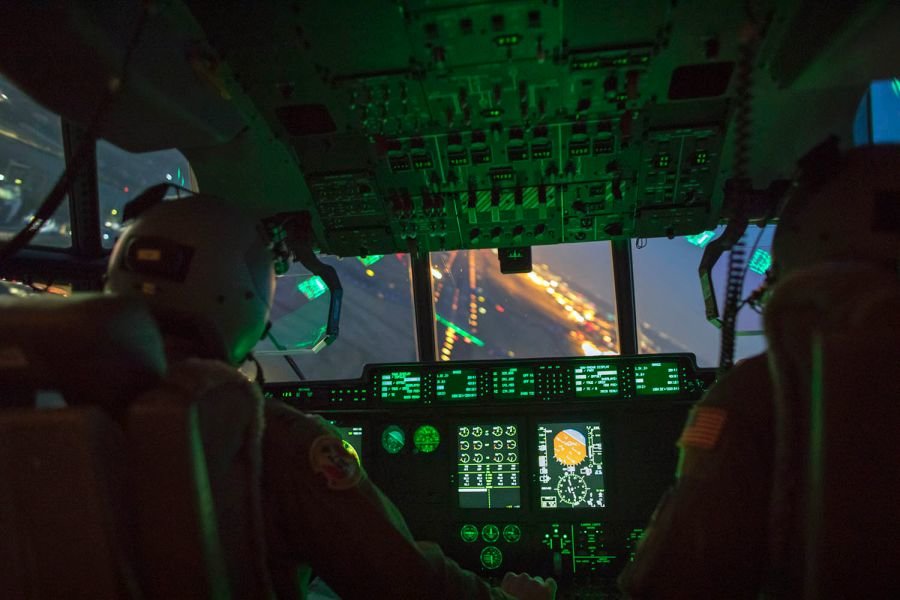
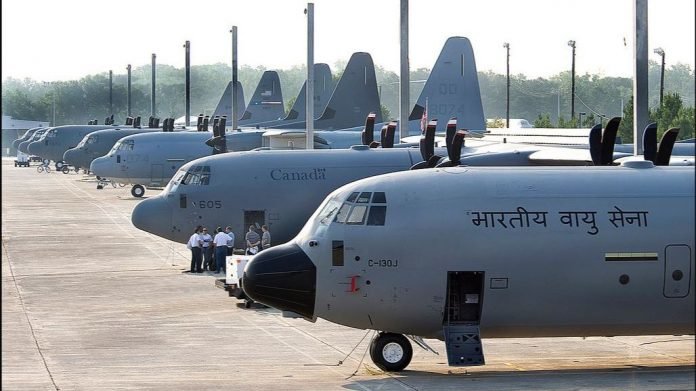
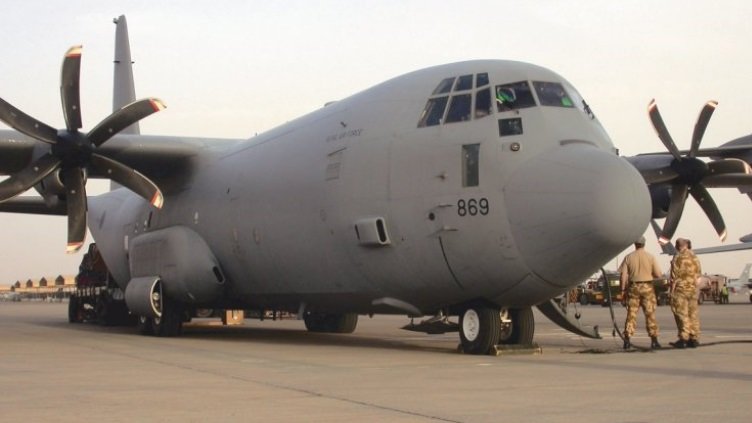

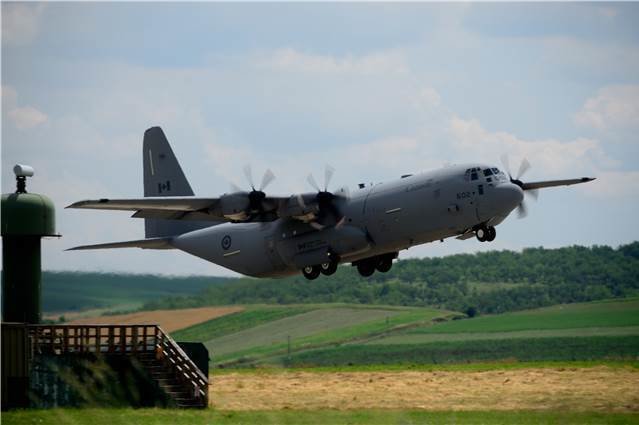
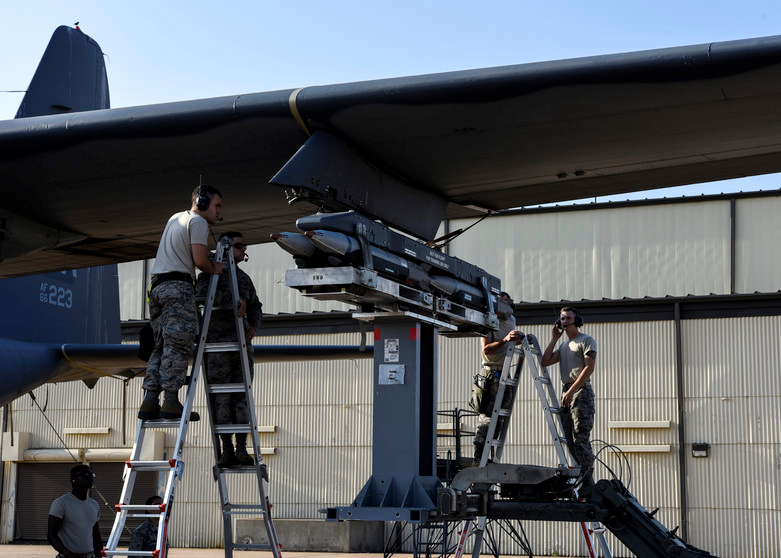
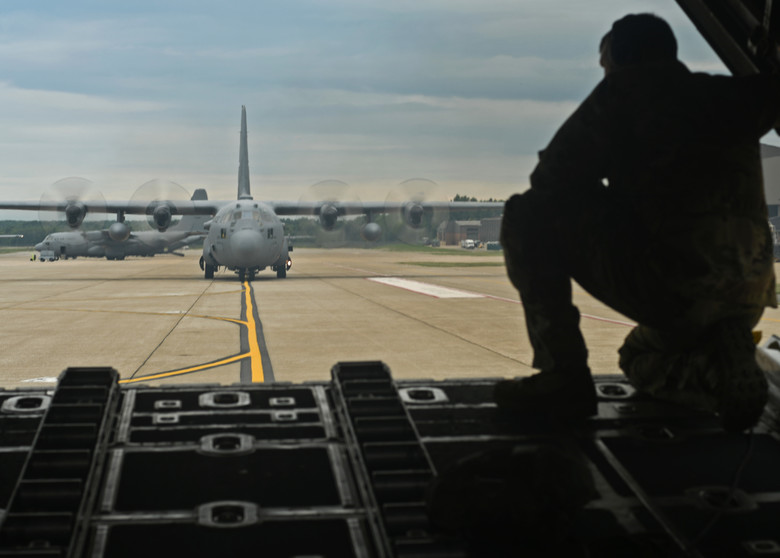
RAAF considering Litening AT pods with C-130J
in 2019
Posted
The RAAF is reportedly looking to integrate the Northrop Grumman AN/AAQ-28 Litening AT targeting and EO/IR pod with its fleet of 12 Lockheed-Martin C-130J Hercules airlifters.
With the retirement of the F/A-18A/B classic Hornet by 2022, the RAAF will have about 40 Litening AT pods in its inventory. The pods were acquired for the classic Hornet fleet in 2008 under the Project AIR 5376 Phase 2.4 element of the Hornet Upgrade Program (HUG) to replace the AN/AAS-38 NITEHawk pod.
RAAF Hornets typically carry the Litening pod on the Station 5 centreline or Station 6 shoulder pylons, depending on the aircraft’s configuration. It is understood the Litening AT performs particularly well in low visibility conditions, a fact which anecdotally has been proven in more than three years of classic Hornet Operation Okra missions in the Middle East from 2015 to 2018. The RAAF’s F/A-18F Super Hornets and EA-18G Growlers use the AN/ASQ-228 ATFLIR pod.
Following the retirement of the RAAF’s C-130H and recent upgrades to the communications, operational flight program, electronic warfare self -protection systems, and new load clearances on the C-130J, that aircraft is now fully committed to operationally supporting the Australian Army in more complex missions and tasks.
The addition of an EO/IR pod such as the Litening AT would enhance the C-130J’s ability to provide ISR overwatch for forces on the ground, to ensure a designated landing or extraction zone is clear of threats, to geolocate targets of interest or precision airdrop locations, or to even provide fires support to off-board shooters. For peacetime missions, a high-performance EO/IR pod could provide accurate imagery and data to support the HADR or search and rescue roles.
Globally, there are several models of C-130 which employ EO/IR pods, with mounting positions including an integrated ball turret under the aircraft’s nose (AC/MC-130), an extension of the port main undercarriage sponson (KC-130J), or on a pylon mounted on the rear side troop door (KC-130T).
In 2016 US Air National Guard C-130Hs successfully integrated Litening pods on their outboard wing pylons, meaning much of the non-recurring clearance and integration work has already been done for the combination. Late last year the RAAF activated the C-130J’s wing stations for the first time, with the installation of external fuel tanks.
There are few details about the timeframe of any possible EO/IR pod integration work, nor what industry elements would support the integration activity. But it is likely Airbus as RAAF C-130J platform steward, Northrop Grumman as Litening AT OEM, and Lockheed Martin as C-130J OEM will all have roles to play.
Source: https://australianaviation.com.au/2019/02/raaf-considering-litening-at-pods-with-c-130j/